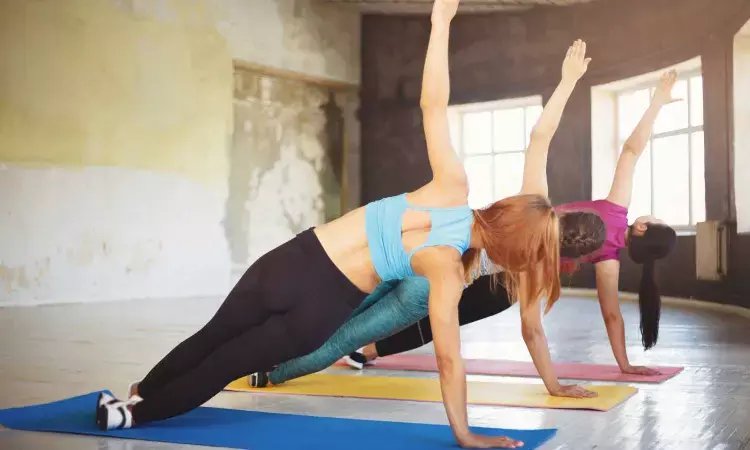- Home
- Medical news & Guidelines
- Anesthesiology
- Cardiology and CTVS
- Critical Care
- Dentistry
- Dermatology
- Diabetes and Endocrinology
- ENT
- Gastroenterology
- Medicine
- Nephrology
- Neurology
- Obstretics-Gynaecology
- Oncology
- Ophthalmology
- Orthopaedics
- Pediatrics-Neonatology
- Psychiatry
- Pulmonology
- Radiology
- Surgery
- Urology
- Laboratory Medicine
- Diet
- Nursing
- Paramedical
- Physiotherapy
- Health news
- Fact Check
- Bone Health Fact Check
- Brain Health Fact Check
- Cancer Related Fact Check
- Child Care Fact Check
- Dental and oral health fact check
- Diabetes and metabolic health fact check
- Diet and Nutrition Fact Check
- Eye and ENT Care Fact Check
- Fitness fact check
- Gut health fact check
- Heart health fact check
- Kidney health fact check
- Medical education fact check
- Men's health fact check
- Respiratory fact check
- Skin and hair care fact check
- Vaccine and Immunization fact check
- Women's health fact check
- AYUSH
- State News
- Andaman and Nicobar Islands
- Andhra Pradesh
- Arunachal Pradesh
- Assam
- Bihar
- Chandigarh
- Chattisgarh
- Dadra and Nagar Haveli
- Daman and Diu
- Delhi
- Goa
- Gujarat
- Haryana
- Himachal Pradesh
- Jammu & Kashmir
- Jharkhand
- Karnataka
- Kerala
- Ladakh
- Lakshadweep
- Madhya Pradesh
- Maharashtra
- Manipur
- Meghalaya
- Mizoram
- Nagaland
- Odisha
- Puducherry
- Punjab
- Rajasthan
- Sikkim
- Tamil Nadu
- Telangana
- Tripura
- Uttar Pradesh
- Uttrakhand
- West Bengal
- Medical Education
- Industry
For BP lowering, static isometric exercise, such as wall sits, are the best: Study

USA: Static isometric exercises-the sort that involve engaging muscles without movement, such as wall sits and planks-are best for lowering blood pressure, find a pooled data analysis of the available evidence from clinical trials, published online in the British Journal of Sports Medicine.
But ‘cardio’ (aerobic exercise); dynamic resistance training, such as squats, press-ups, and weights; high-intensity interval training or HIIT for short (episodic short bouts of high-intensity exercise interspersed with short periods of recovery at a lower intensity) are all effective, indicate the findings.
It may be time to review the current exercise guidelines for the prevention and treatment of high blood pressure, suggest the researchers.
Previously published research shows that exercise in general is associated with significant reductions in blood pressure, with aerobic (’cardio’) exercise, such as walking, running, and cycling, the type primarily recommended for managing blood pressure.
But this recommendation is largely based on older data that exclude the newer forms of exercise, such as HIIT and isometric exercise, meaning that the current recommendations are probably outdated, suggest the researchers.
In a bid to potentially update information on the best form of exercise for controlling blood pressure, they trawled research databases looking for clinical trials reporting the effects of an exercise training intervention lasting 2 or more weeks on resting blood pressure.
The exercise interventions were classified as aerobic (‘cardio’); dynamic resistance training; a combination of these; HIIT; and isometric exercises.
Healthy resting blood pressure was defined as reading below 130/85 mmHg; pre-high blood pressure as 130-139/85-89 mmHg; and high blood pressure as 140/90 mmHg or more.
Systolic blood pressure, the first number in a reading, measures arterial pressure when the heart beats; diastolic blood pressure, the second number, measures arterial pressure between beats.
In all, 270 randomised controlled trials published between 1990 and February 2023 were included in the final analysis, with a pooled data sample size of 15,827 participants.
The pooled data analysis showed significant reductions in resting systolic and diastolic blood pressure after all the various categories of exercise, but with the largest falls in both systolic and diastolic blood pressure after isometric exercise training.
The reductions in blood pressure after aerobic exercise training amounted to 4.49/ 2.53 mmHg; 4.55/3.04 mm Hg after dynamic resistance training; 6.04/2.54 mmHg after combined training; 4.08/2.50 mmHg after HIIT; and 8.24/4 mmHg after isometric exercise training.
The rank order of effectiveness values for reducing systolic blood pressure was isometric exercise training (98%), combined training (76%), dynamic resistance training (46%), aerobic exercise training (40.5%) and HIIT (39%).
Secondary analyses revealed wall squats (isometric) and running (aerobic) as the most effective individual exercises for reducing systolic blood pressure (90.5%) and diastolic blood pressure (91%), respectively, with isometric exercise, overall, the most effective for reducing both blood pressure elements.
The researchers acknowledge that variations in the types of participants included across the clinical trials and differences in statistical and methodological processes and exercise interventions may have influenced the findings, and so should be interpreted in light of these limitations.
But they nevertheless conclude: “Overall, isometric exercise training is the most effective mode in reducing both systolic and diastolic blood pressure.
“These findings provide a comprehensive data-driven framework to support the development of new exercise guideline recommendations for the prevention and treatment of arterial hypertension.”
Reference:
Edwards JJ, Deenmamode AHP, Griffiths M, et alExercise training and resting blood pressure: a large-scale pairwise and network meta-analysis of randomised controlled trialsBritish Journal of Sports Medicine Published Online First: 25 July 2023. doi: 10.1136/bjsports-2022-106503
Dr Kamal Kant Kohli-MBBS, DTCD- a chest specialist with more than 30 years of practice and a flair for writing clinical articles, Dr Kamal Kant Kohli joined Medical Dialogues as a Chief Editor of Medical News. Besides writing articles, as an editor, he proofreads and verifies all the medical content published on Medical Dialogues including those coming from journals, studies,medical conferences,guidelines etc. Email: drkohli@medicaldialogues.in. Contact no. 011-43720751


